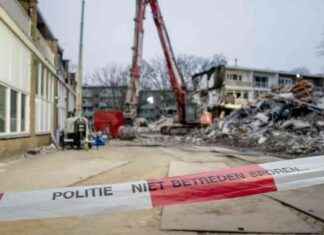Losavio, a service coordinator at Catholic High School, Baton Rouge, Louisiana helps students meet the school’s requirement for community service hours. Seniors are required to complete 20 hours of “Type A” volunteering, which is where they have direct contact and can make direct connections with those being served. Juniors must complete 40 hours.
While packing boxes in a warehouse for food banks is not allowed, serving meals at a soup kitchen qualifies. Losavio stated that they want the children to be able to interact with people and feel empathy for those who are in pain.
This was all made almost impossible by the coronavirus virus pandemic that sent students home during the 2019-2020 schoolyear. They also kept them home the next year, as communities were shut down and people were warned to avoid direct contact.
With the threat of a pandemic fading, school officials are looking forward to reverting to pre-COVID-19 times of unhindered volunteering. Catholic High School is not far away. Losavio stated, “I work with teenagers all the time, and I know how knuckleheads their are.” “But, I also know that they are at their best when they’re helping others.”
Losavio, a school administrator in the United States, had to reduce or eliminate student volunteer requirements because of the pandemic. Students abandoned volunteering, or tried to find ways to help their communities during times of crisis and isolation.
Catholic High halved the requirement for volunteer hours across the board and omitted the Type A stipulation. The definitions of volunteering were creatively reworked.
Losavio stated that for the past two years, Losavio had told children that so long as they’re serving someone other than their family and aren’t getting paid for it it counts towards your hours. It’s been a huge loss. “I’m trying get them to care for other people.
This pullback was felt all over. In a time of increasing need, thousands upon thousands of volunteer hours disappeared. Students also lost the opportunity to build empathy and trust that these requirements were meant to foster.
Adam Weiss is the Oceana High School’s community service coordinator. He said that there are thousands of hours of work still not done and that it is not being served. Volunteering is a great way for students to get out of their bubble, as it gives them experience in the workplace and gives back to their community.
Weiss’ school has dropped its requirement for community service from 100 hours down to 32. He said that even this is not required anymore.
Volunteer-oriented groups such as the Key Club had to face the same problem even at schools that do not have service requirements.
Kimberlyn Denson (9th grade teacher, Key Club adviser at Baton Rouge Magnet High School) said that “Everything just went crazy.” “Suddenly, there was nothing for them to do safely.”
Although her school does not have a requirement for volunteers, Key Club members worked hard to find safe ways of contributing — organizing donation drives to collect toiletries, socks, and canned goods for homeless shelters.
Volunteering outdoors became an increasingly popular activity. Denson organized a clean up at Louisiana’s oldest Black cemetery in December 2020. It attracted so many students that it was forced to be closed at 60.
She said that there were “small advantages” to those isolating periods. “The students created service projects that we would never have thought of before.
Only Maryland (and the District of Columbia), have a requirement for community service. It is not a common state requirement. However, they are often imposed by private and public schools.
These schools and districts were left to decide how to manage the situation, as there was no coordination. This applies to reintroducing community service requirements.
Prince George’s County in Maryland waived the 75-hour state-mandated requirement to graduate for the 2020 or 2021 graduating classes. The 2022 graduating class will have a 24-hour volunteer requirement, as well as relaxed guidelines regarding what qualifies.
Some cases have been confused by shifting policies. Washington waived the 100-hour requirement for high school graduation in 2020 and 2021. However, the school system in Washington has restored it to its full extent this year. Many seniors who have not worked for 18 months are now scrambling to get volunteer hours.
Enrique Gutierrez is a spokesperson for D.C. Public Schools. He stated in an email that the school district had worked to create socially distant opportunities so that students can still have an impact in a world of COVID.
Safe volunteer opportunities are limited now that students have returned to school. Many common volunteer opportunities, such as senior homes and homeless shelters, remain closed to outsiders. Food banks and other organizations have also had to establish social distancing guidelines for indoor and warehouse work.
Cody Jang (associate director of community engagement at the San Francisco-Marin Food Bank), stated that a room that once housed 80 people can now hold 20. “A teacher contacted me to invite 60 students. We didn’t have enough space, so we had to accommodate them with social distancing.”
Some schools did not choose to lower their community service requirements during the pandemic. Administrators at Lick-Wilmerding High School, San Francisco, kept the 40-hour requirement for 10th-graders.
“That was an important decision that we had to make early — should we scrap the entire requirement?” asked Alan Wesson Suarez (school’s public purpose program Director). “I’m glad that we decided to keep them.” It would have sent the wrong message to students about how we want them to engage.
It was difficult to keep the requirement in place in such a closed country.
Suarez stated, “Suddenly we had the need to adapt and accommodate students who couldn’t leave their home,”
Sometimes, students came up with their own new ways of serving the public. Soon, several students joined the fray and began transcribing historical documents for Smithsonian Institution.
Suarez stated, “I have never seen a student do this before.”






